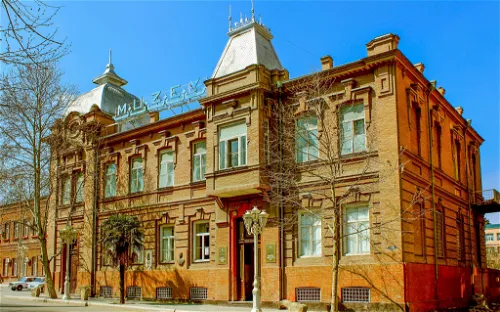This museum is closed temporarily.
Ganja State History and Ethnography Museum and its collection
The Ganja State History-Ethnography Museum, named after Nizami Ganjavi, is the largest museum in Ganja. It is situated in the former mansion of the descendants of the last independent khan of Ganja. This location adds a unique historical context to the museum, making it a significant site for those interested in the history of the region.
Exhibits and Collections
Founded in 1924, the Ganja State History-Ethnography Museum houses over 30,000 exhibits. These exhibits span the history of Ganja from ancient times to the modern era, and include archaeological finds, material-cultural monuments, and ethnographic, epigraphic, and numismatic collections. These collections are displayed across 18 halls, providing a comprehensive overview of the region's history.
Museum Layout
The Ganja State History-Ethnography Museum covers an area of 972 square meters and is divided into two departments: the ancient period and the modern period. This division allows visitors to explore the history of Ganja in a chronological order, providing a clear understanding of the region's evolution over time.
Ganja Fortress Gates
The Ganja Fortress Gates, a monumental complex that includes the Museum of Archaeology and Ethnography, is located at the eastern entrance of Ganja on the Baku-Gazakh highway. This location makes it a significant landmark for visitors entering the city from the east.
History & Anthropology Archaeology Ethnology Historic house




























































